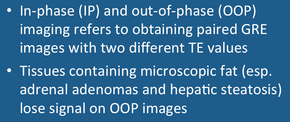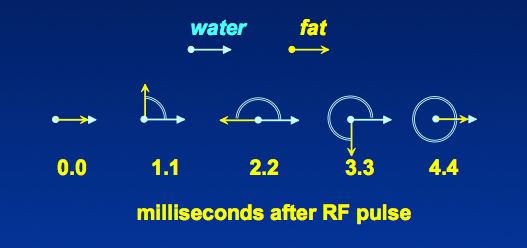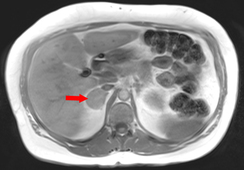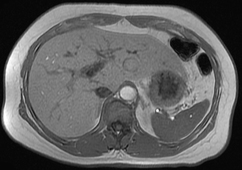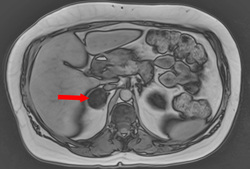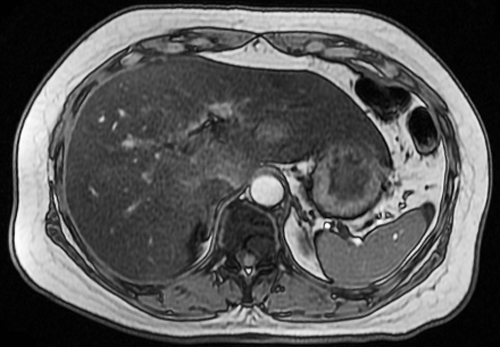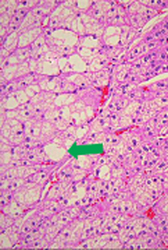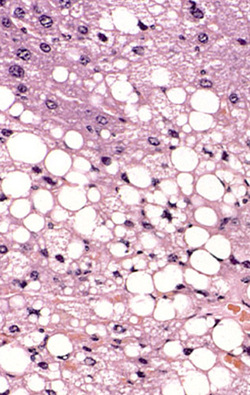Because water and fat protons have slightly different resonance frequencies, their spins go in- and out-of-phase with each other as a function of time. The period of this phase cycling is 1/Δf, where Δf is the frequency offset between the spins. Thus at 1.5T, the phase cycling period is 1/220 Hz or about 4.5 msec. (To simplify the discussion below I have rounded this number down to an even 4.4 msec).
|
In-phase and out-of-phase conditions occur twice per cycle, or approximately every 2.2 msec at 1.5T. (At 3.0T the phase cycling is twice as fast, occurring every 1.1 msec). GRE images obtained at 1.5T at TE's of 2.2, 6.6, 11.0 msec are called out-of-phase (OOP); those obtained at 4.4, 8.8, etc. are called in-phase (IP).
|
By the late 1980's several investigators began to realize that this phase cancellation effect could be used clinically to identify and even quantify the fat content of tissues like the liver. One particularly common use of this principle today is to help in the differentiation of adrenal adenomas (that typically contain fat) from carcinomas and metastases (that do not). The diagnosis of a variety of other abdominal lesions, including angiomyolipomas, renal clear cell carcinoma, and focal fatty infiltration of the liver may be assisted by IP-OOP imaging. The technique, illustrated below, involves obtaining a pair of GRE images at the same TR but with two different TE values, one IP and the second OOP. Lesions whose signal intensities drop significantly on the OOP images are likely to contain microscopic fat. Accordingly, IP/OOP scanning is now a standard part of most abdominal imaging protocols world-wide.
|
|
|
The out-of-phase cancellation effect between fat and water give rise to a specific type of MR artifact, called the "India ink artifact" or "chemical shift artifact of the second kind." This is discussed in a later Q&A.
Advanced Discussion (show/hide)»
No supplementary material yet. Check back soon!
References
Outwater EK, Blasbalg R, Siegelman ES, Vala M. Detection of lipid in abdominal tissues with opposed-phase gradient-echo images at 1.5T: techniques and diagnostic importance. Radiographics 1998; 18:1465-80.
Outwater EK, Blasbalg R, Siegelman ES, Vala M. Detection of lipid in abdominal tissues with opposed-phase gradient-echo images at 1.5T: techniques and diagnostic importance. Radiographics 1998; 18:1465-80.
Related Questions
What is a chemical shift artifact of the second kind?
How do you produce multiple GRE's from a single pulse?
What is a chemical shift artifact of the second kind?
How do you produce multiple GRE's from a single pulse?
